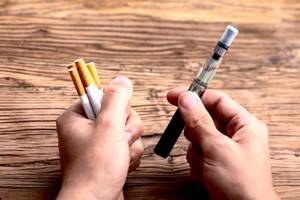Home — For the public
- Map of medical organizations
- Vaccination
- Clinical examination
- Fluorography
- Addresses and opening hours of clinics
- Emergency rooms
- Oncology
- Where to take an HIV test
- Healthy child's office
- Services
- Prevention of CVD
- Disease Prevention
- World Patient Safety Day
- Newspaper "Medical News"
- specialist
- School of Health
— Disease prevention
- HIV infection
- All about vaccination
- All about proper nutrition
- Hepatitis
- Flu
- Dementia
- Schoolchildren's health
- STD
- Tick-borne encephalitis
- Whooping cough
- Measles
- Legionellosis
- Meningococcal infection
- Oncology
- Acute intestinal infection
- Pediculosis
- First aid
- Pneumococcal infection
- Pneumonia
- Prevention of rabies
- Dependency Prevention
- Rotavirus infection
- Diabetes
- Cardiovascular diseases
- Injuries
- Tuberculosis
- Tularemia
- Physical activity
- Obstructive pulmonary disease
- Exotic infections
- Ecology
- Why is swimming in ponds dangerous?
— Prevention of addictions
- Prevention of alcoholism
- Smoking prevention
— Smoking prevention — Is vaping harmful, iqos
The spread of alternative types of smoking is the result of the law “On protecting the health of citizens from the effects of environmental tobacco smoke...”. Manufacturers and distributors claim that such methods are less harmful to the body: there are no tars or exposure to high temperatures, and some formulations do not even contain nicotine.
Vaping is the most famous type of “smokeless” smoking. Distributors recommend it as a way to gradually quit nicotine. You need to figure out whether vaping is harmful to health, and what other forms of using tobacco and its substitutes exist.
Cigarette or vape?
Talking about how wonderful electronic cigarettes are, distributors of alternative means of smoking carefully list all the poisons and carcinogens that a person receives when clicking a lighter. Indeed, in addition to nicotine, which is a psychoactive substance, smokers acquire smoke inhalation. It contains: soot, resins, carbon monoxide, heavy metal salts. Each cigarette contains up to 7,000 chemical compounds, 10% of which are carcinogens.
Electronic cigarettes consist of a vaporizer and a battery. Under the influence of temperature, liquid turns into vapor. The composition indicated on the packaging is formally safe: it contains no harmful or prohibited ingredients. But when heated even to 52 0 C, the components of the liquid undergo chemical reactions in which both poisons and carcinogens are formed, the content of which increases with a further increase in temperature.
Manufacturers offer reassurance that newer and safer “substitutes” for smoking are being produced, and if the composition of the liquid is not trustworthy, you can make it yourself.

Types of fluorography
Today there are two main types of fluorography:
- Film , in which the image is only printed on the photograph;
- Digital is a more modern and convenient method. The research result can not only be printed, but also saved as a file on a computer or transmitted by e-mail. This method allows you to create an electronic database. In addition, when performing digital FLG of the lungs, the patient receives a lower dose of radiation exposure than during film FLG.
What is vaping
Vaping (or vaping) is a term that refers to the process of smoking an electronic cigarette, vaporizer or other similar device. Passing by a group of “floating” people, an uninitiated person sees how they release white puffs from boxes of various shapes with nozzles, smells berries, coffee, lemon, mint.
Among them there are smokers who switched to an alternative method of obtaining nicotine and completely new consumers who started with electronic cigarettes.
The reasons why people become vapers vary:
- gradual cessation of tobacco;
- mental dependence on the act of smoking;
- the desire to be “like everyone else”;
- maintaining the communication environment (if friends are already “floating”);
- demonstrative smoking with show elements.
Is it possible to smoke before fluorography?
Many smokers wonder whether it is possible to smoke before fluorography and whether this will affect the result of the study. A smoke break before the procedure will not change the doctor’s conclusion, since the image reflects only those changes in the lungs that are already firmly formed.
Important! The fluorograph is not able to detect the remains of cigarette smoke in the bronchi, since it is not radiopaque. Therefore, a smoker can afford to smoke before the study.
The device and composition of the vape
Essentially, a liquid vape is a portable inhaler. The smoker inhales steam, the formation of which is responsible for the substance glycerin. This is a polyhydric alcohol that helps the liquid become more viscous and the vapor more dense.
Propylene glycol is a solvent. It makes the liquid more fluid and, by irritating the receptors of the oropharynx, creates the so-called trothit (or “throat hit” effect). This sensation occurs when inhaling smoke with a high temperature; electronic cigarettes imitate it.
Dyes and flavors are substances responsible for the appearance and smell of a liquid.
There are vapes with and without nicotine. Distributors claim that its amount in the liquid is known and indicated on the packaging. With this information, the smoker will learn to gradually reduce the dosage until he switches to a product with 0 nicotine.
The liquid, or as consumers say, juice, e-liquid from a vape can be factory-made or home-made. When purchasing refill for an electronic cigarette, smokers are accustomed to focusing on the manufacturer’s brand and believing that its composition is identical to the inscription on the package.
In fact, the increasing demand for the product has led to an increase in the volume of counterfeit products of lower quality, the composition of which is unknown. Vapers admit that even in specialized stores they have repeatedly purchased e-liquid that was most likely a fake.
In 2021, a project to standardize liquids for electronic cigarettes was proposed in the Russian Federation. It came into force in June 2021. From now on, cigarette refills must contain only approved, chemically pure substances and in the quantities indicated on the packaging. However, this GOST is voluntary, that is, the manufacturer is not obliged to produce goods in accordance with it.
Lack of money and the desire to continue to “soar” leads to handicraft production of liquids. Despite the recommendations for the composition, smokers can purchase components from their own hands or prepare juice with glycerin from a pharmacy. It is difficult to talk about how safe such experiments are for health.
What diseases does it detect?
Fluorography of the lungs reflects characteristic changes inherent in the following diseases:
- Pulmonary tuberculosis;
- Malignant and benign tumors;
- COPD (chronic obstructive pulmonary disease), especially in the later stages;
- Pneumonia;
- Lung abscess;
- Pleurisy.
Despite the fact that the main purpose of the study is to identify diseases of the respiratory system, other pathologies can be identified along with them in the image. Thus, an experienced radiologist can detect myocardial hypertrophy, indicating hypertension. Also, fluorography of the chest reveals some pathologies of the skeletal system, for example, fractures of the rib or collarbone in the past in case of improper fusion.
Important! It is not always easy to detect chronic bronchitis, which is characteristic of smokers, on fluorography, since in the early stages of development the disease practically does not change the structure of the lungs and bronchi. A typical fluorography picture for bronchitis appears already when the pathological process is quite advanced.
Is vapor from vaping harmful?
Vapers believe that the absence of carcinogenic resins and the conditional safety of the liquid itself are a guarantee that the liquid will not harm its health when vaping. In reality, electronic cigarettes are far from harmless:
- When liquids are heated from glycerin and propylene glycol, toxic substances and carcinogens are formed. The total number of connections is about 30;
- artisanal and counterfeit “liquids” have an unknown composition; the desire to reduce the price of the product forces people to use low-quality raw materials. In addition, the nicotine content is often too high - the risk of poisoning is high;
- Diacetyl flavoring is included in 75% of liquids. It causes the so-called “popcorn lung disease” - inflammation and sclerosis of small bronchioles approaching the lung tissue. This change is irreversible;
- fragrances can cause allergic respiratory diseases. Therefore, vaping is strictly contraindicated for asthmatics.
Electronic cigarettes are not recommended for the following categories of citizens: children under 18 years of age, pregnant women, persons with any allergic diseases and those who have never smoked before.
Comparing what is more harmful - vaping or a cigarette, University of California employee Stanton Glanz argues that traditional smoking is more dangerous: this way more nicotine enters the body. But the components of the vape liquid form poisons, and vapor particles are deposited in the lungs, leading to chronic diseases.
Minors often appeal to the fact that liquids without nicotine are just a pleasant indulgence, as they do not lead to the development of addiction. So is it harmful to a teenager’s health to use a vape “for relaxation”, “for ? Narcologists and pediatricians are confident that vaping is unsafe.
The lack of long-term experience with vapers does not allow us to fully assess the frequency of long-term negative consequences. But experts say that e-cigarettes, like traditional ones, increase the risk of cancer, heart and lung disease, and addiction.
EVALI: case history
A 23-year-old man was admitted to the emergency department of the University Hospital in Amsterdam, the Netherlands. His medical history began 3 weeks ago, when the young man developed shortness of breath, fever, dry nonproductive cough, and nocturnal hyperhidrosis. Note that this story happened in 2021, long before the SARS-CoV-2 epidemic.
Two weeks prior to hospital admission, the patient was seen in an outpatient clinic where he received a course of azithromycin (an antibiotic) for suspected infectious pneumonia. But the young man’s well-being did not improve, so a week later at the emergency center he received a prescription for another antibiotic - doxycycline. However, even after this course no improvements were observed.
The patient felt unwell - due to severe nausea, he could not eat for several days. The only history of respiratory disease was asthma in childhood. The young man reported no surgeries and was not taking any medications. He did not smoke tar cigarettes and had not traveled recently. He had perfect biochemical blood test results, and his home was clean and had normal humidity levels. During auscultation, the doctor did not hear wheezing or any suspicious noises in the chest. What's the matter?
The young man did not tell the doctor that he had been smoking electronic cigarettes for about a month. It was only when a urine toxicology screen showed elevated levels of acrylic acid nitrile, propylene oxide, vitamin E acetate, and a positive result for tetrahydrocannabinol (THC) that the doctor asked a follow-up question about vaping.

Other ways to use tobacco
ICOS, glo – heated tobacco products. Their production was launched by British American Tobacco and PhilipMorris. These are the giants of the tobacco industry who do not want to lose consumers who switch to electronic cigarettes or quit smoking altogether.
The products operate on a battery. Specially processed tobacco is sold separately in the form of replaceable sticks. Using a heat source, they are heated and the nicotine is drawn out in the form of an aerosol. The operating principle of the device does not allow them to be classified as electronic cigarettes.
Their heating and steam temperatures are lower than those of conventional cigarettes - 350 0 C for iqos and 240 0 C for glo. The raw material contains nicotine, which means that such smoking can lead to addiction. IQcover is a cheap Chinese analogue of ICOS, which can be used using sticks from different companies.
There is no reliable information about the safety of the products. Studies sponsored by the manufacturers themselves indicate that they cause less harm than regular cigarettes. However, toxic substances and nicotine still penetrate the body, and the strange taste (manufacturers claim that the products are almost similar to Kent and Parliament) does not always satisfy the needs of electronic smokers. No one can guarantee that at some point they will not want to switch to real cigarettes.
A hookah is a device for smoking tobacco, in which the raw material smolders in contact with lit coals, and the smoke passes through a water or other liquid filter and partially cools. Compared to regular cigarettes, the temperature of the hookah is lower - 400 0 C versus 600 0 C. However, it is still enough for the smoker to receive a thermal burn to the respiratory tract. The use of a hookah with nicotine tobacco is just as dangerous as traditional smoking: nicotine and carbon monoxide are found in the blood of the people studied. The “throat hit” effect with this method of smoking is practically not felt. The pursuit of thrills can lead to switching to cigarettes or the use of narcotic mixtures - for example, spice.
Snus and nasvay are types of chewing tobacco. They are placed between the lip and gum for a long time. The dosage of nicotine released during consumption exceeds that of traditional smoking. The ability to use without special restrictions makes snus attractive to teenagers. Their danger is as follows:
- nicotine addiction develops;
- sores appear at the point of contact;
- local immunity is impaired;
- the risk of oropharyngeal tumors increases;
- there is a possibility of turning to drugs.
Errors in radiographic examination
Unfortunately, sometimes it turns out that fluorography does not show any pathological changes, but in fact they exist and the patient requires treatment. Why might this happen?
Firstly , as we have already noted, fluorography is a screening method, that is, it is not accurate enough to detect the slightest changes in the lungs.
Secondly , the equipment used, especially in small cities, is often outdated or incorrectly configured.
In this regard, the diagnosis of any bronchopulmonary disease is never made solely on the basis of an x-ray examination. The patient must be examined by a doctor, perform auscultation, prescribe the necessary tests and other studies, and only then, after analyzing the whole picture (including X-ray data), make the necessary diagnosis and prescribe treatment.









